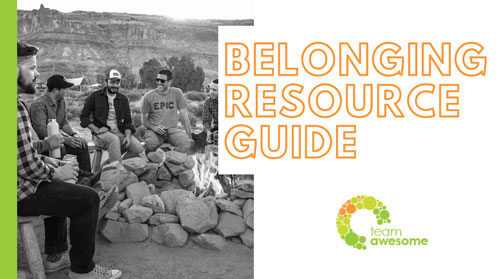The topics of communication, feedback, and relationships with bosses come up consistently as some of the top factors we can improve as leaders to give our teams a better work experience. People tend to go to work every day with the intention of doing well, and they are hungry for validation that they are on the right track, or what they can adjust to get there. Particularly with Millennials and Gen Z, the hunger for coaching and feedback is only going to grow. And yet, most leaders (yes, even some very seasoned, executive leaders) have completely missed out learning how to be better at providing feedback to others. I promise, this is not going to go away.
Okay, so you are too busy to go to a full day class to learn about giving feedback (I disagree, but I digress). You owe it to yourself and your team to make small adjustments and take action to be better at feedback one incremental step at a time. Here are four tweaks you can make to your approach to giving feedback that will make a difference. Combine them all and you will be well on your way to your team wondering what has changed that is making your feedback style so awesome.
Prepare
One key reason we feel uncomfortable having timely, honest conversations with people is that we haven’t given due time to prepare. Write down what you want to say, the goal of the conversation, and the important key points you want to cover. Be flexible during the conversation to adjust your message, but preparing up front by clarifying your goals and message, as well as preparing the right place and time for the conversation can make a huge difference. No “drive by” feedback shootings at the open-air cubicles, please.
Another aspect of preparation that is common among the best leaders is consistently planning one-on-one touch base time with direct reports, and not cancelling them. If you have a standing appointment with your team, it can be used for recognition, redirecting, feedback, you name it. It removes the ole “come see me before the end of the day” gut-wrenching meeting or the mysterious “feedback meeting” invite that pops on the calendar with no notice. Seriously, when you do that you’ve probably ruined a good chunk of someone’s day.
Listen
Some of the best feedback you will give comes from you truly understanding the situation. If you listen with intent to really hear the other person before formulating your answer, you will inevitably craft more valuable feedback. In the moment, remember WAIT (Why Am I Talking?).
There are three levels of listening:
- Listening to respond
- Listening to hear
- Listening to feel
If you find yourself at Level 1 listening, you will be most effective by working on actively listening at a minimum at Level 2. [Read more in depth about the Levels of Listening here]
Situational Leadership
First step, listen. Second step, adjust your leadership style within the range of skills that is authentic to you to be most effective for the other person and the situation. Using situational leadership means being adaptive, considering the person and situation, and being authentic.
It is always important to stay true to your own unique leadership style, but since I know you aren’t a one trick leadership pony, you can pull out the right skills at the right time. Consider what that person needs in the moment. For example, supporting a young new-to-the-company employee during a merger might require you to choose different skills than prepping your most tenured rockstar employee for a huge client pitch.
Feedforward
Feedback is giving information about something that happened in the past, and cannot be changed. Feedforward is looking toward the future and identifying or suggesting things that could be done differently next time. It tends to be easier for the giver and receiver because it is actually actionable and it reduces the conflict we feel when we focus on things we cannot change (the past).
Here is the difference between feedback and feedforward in an example:
Scenario: Your team member tanked a big presentation in front of your boss.
Feedback: That was not good. You were not prepared and the slides had a lot of errors that opened you up to a firing of questions that you couldn’t answer.
Feedforward: One of the things I want to suggest you prepare for in the next presentation is to have an additional round of editing for errors, and a practice run to allow you be more comfortable answering questions on the fly. How does that sound?
We could write an epic long book about the art of honest conversations, but these small adjustments mentioned here can have big impacts on how you approach giving feedback and how your team experiences receiving it. Try one (or four), test, and adjust. See what works best for you!
About the author:
Katie Rasoul is the Chief Awesome Officer for Team Awesome, a leadership coaching and culture consulting firm. Find out more by visiting www.teamawesomecoaching.com or join the Team Awesome Community for awesomeness coming straight to your inbox. Follow Team Awesome on Facebook and Twitter.



Trackbacks/Pingbacks